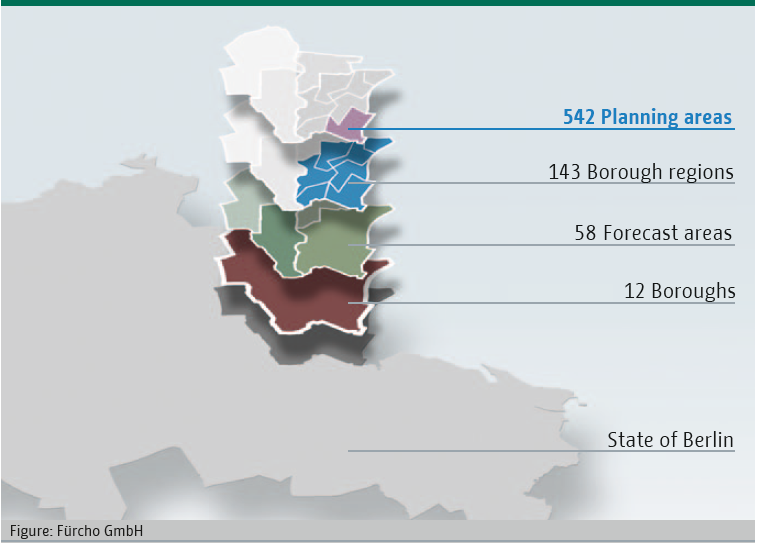Berlin has comprehensive datasets for the areas of the environment, health, social affairs and the city (urban development). Generally, each of these is subject to topic-specific monitoring and publication, often required by law. The different areas are, to a large extent, thus reported on independently of each other, i.e. without any overlaps. The merging of different datasets due to the varying methodological approaches, diverging survey intervals and varying levels of detail poses a great methodological challenge.
In contrast to individual in-depth analyses, the Berlin environmental justice approach seeks to provide a comprehensive overview of the situation as a whole, by analysing data available for different sectors and aggregating this data on a small scale. This small-scale level is based on the planning areas (PLA). With 542 areas, it is the most detailed of the three levels associated with the system of the living environment areas (LEA) in Berlin (as of January 1, 2021, cf. Fig. 1 and SenStadtWohn 2020). The planning areas are primarily used for city-wide monitoring, for example of the development of the housing market, environmental justice and social urban development. For Berlin as a whole, the average number of inhabitants per PLA is around 6,970 (as of December 31, 2018).

